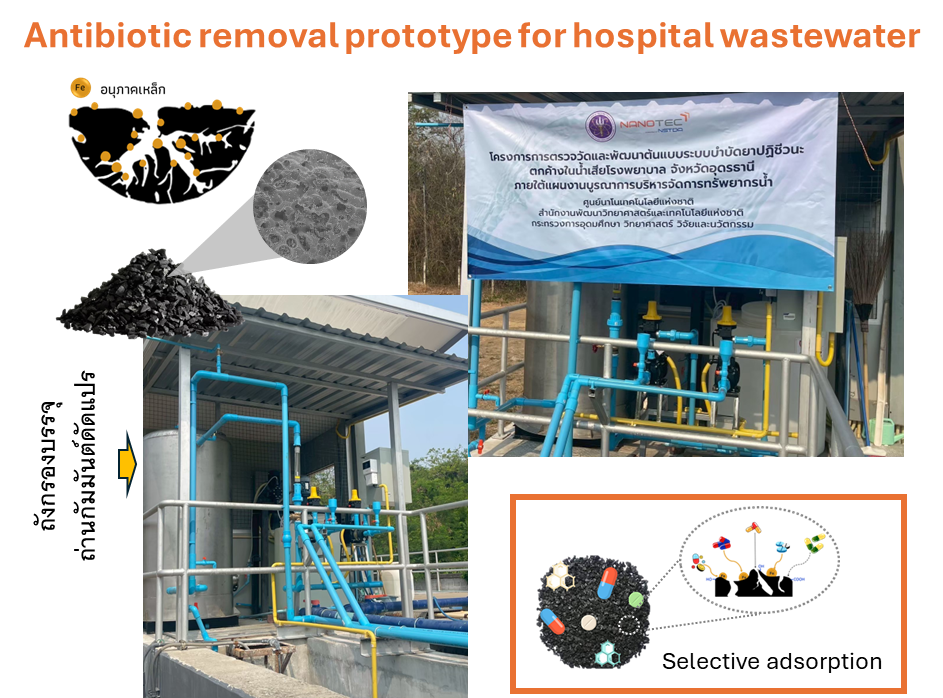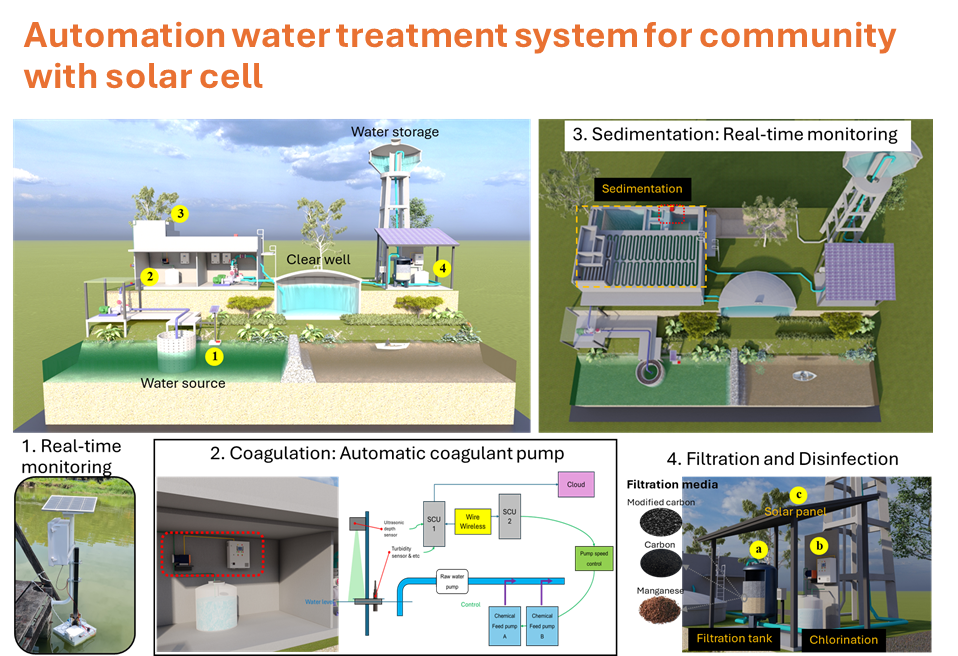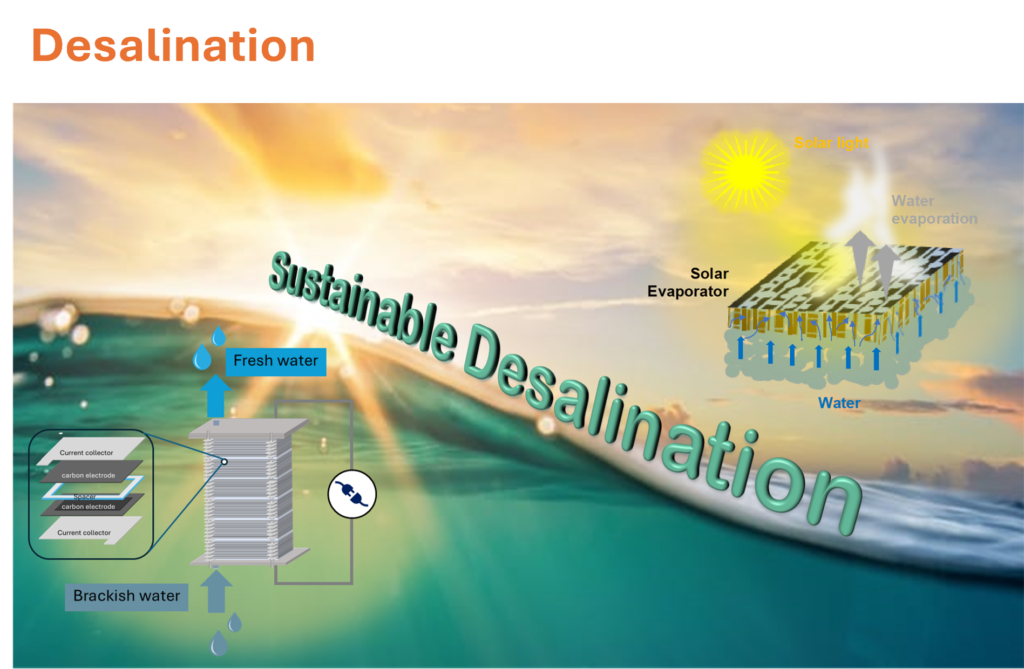Research
Water treatment technology
Waste water

Conventional hospital wastewater treatment processes are often insufficient for the effective removal of antibiotic contaminants, even at trace levels. This is a significant source of antibiotic contamination in the ecosystem. It contributes to the emergence and spread of antimicrobial resistance (AMR), leading to severe global health and economic challenges.
To improve antibiotic removal efficiency, surface-modified porous carbon materials have been employed as an additional treatment step. A coconut shell-based granular activated carbon decorated with iron oxide particles (FerGACO) has shown high adsorption performance. An adsorption capacity attributes to multiple interaction mechanisms such as H-bonding, electrostatic interaction, and electron donor-acceptor complexation. Besides being environmentally benign, the material is also reusable through a thermal regeneration process. A field-scale prototype has been successfully demonstrated at a hospital in Udon Thani province.
Clean water

Community water production systems typically feature standardized and user-friendly designs, but many are outdated and inadequate for addressing the variability in raw water quality. To significantly enhance system performance, our research team has developed a Smart Water Treatment system for communities including: a smart control and monitoring system for automatic operation, advanced filter media to improve water treatment efficiency, and rooftop solar photovoltaic (PV) to reduce energy costs.
An IoT-based Automatic Water Treatment Monitoring and Control System achieves smart operation through several integrated components: real-time IoT monitoring of both raw water (1) and processed water at the sedimentation unit (3). An intelligent microcontroller-driven coagulant dosing pump (2) precisely calculates and automatically adjusts coagulant (and other chemicals) dosages based on real-time evaluated data from sensors (1 and 3). This automation eliminates manual operation, enabling responsive and consistent treatment throughout the year, regardless of fluctuating water quality. Consequently, this innovation reduces operational expenses and mitigate health risks associated with chemical overdosing. The system also leverages industry-standard protocols, enabling flexible integration of wired or wireless sensors and seamless upgrades in the future.
Furthermore, the filtration component (4a) incorporates tailored advanced adsorbent materials, such as bio-based porous carbons and chemically modified activated carbon, providing adaptability for diverse water quality conditions. The disinfection unit (4b) offers flexibility with options like chlorination, UV, or antibacterial media technology. Lastly, solar power integration supports daytime operation, significantly enhancing the plant’s energy cost efficiency.

Pioneering a new era in sustainable water security, we present transformative desalination technologies that redefine freshwater production. While conventional Reverse Osmosis (RO) is energy-intensive and generates significant brine waste, Capacitive Deionization (CDI) offers a greener, more efficient alternative for brackish water treatment, minimizing chemical use and environmental impact. In parallel, solar evaporation—using advanced solar absorbers—mimics natural water cycles to generate clean water with low energy input and zero chemical discharge. Together, these innovations mark a critical shift toward low-carbon, sustainable desalination for future generations.
Our team advances this vision through the development of carbon-based CDI and an interfacial solar evaporator made from bio-based polymers. The CDI system utilizes bio-based porous carbon electrodes to enhance ion removal, durability, and energy efficiency. Meanwhile, the solar evaporator features a bio-based polymer matrix that supports photothermal conversion at the air–water interface, enabling rapid, localized evaporation using only sunlight. Designed for complementary use—CDI for selective ion removal and the solar evaporator for off-grid freshwater production—these carbon- and bio-based technologies offer scalable, eco-friendly solutions tailored to diverse water sources and regional needs.


